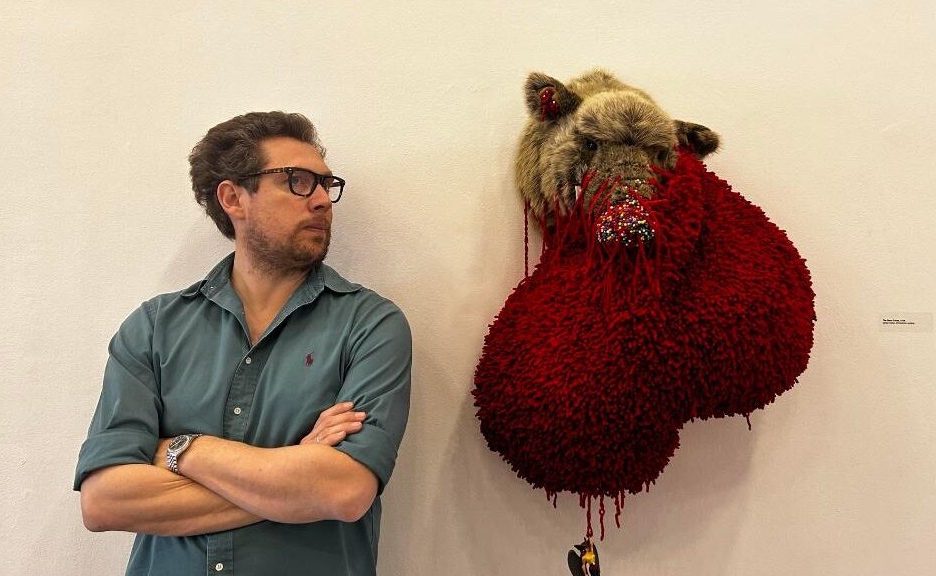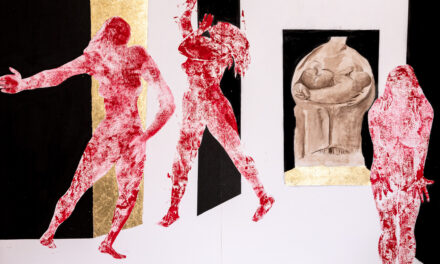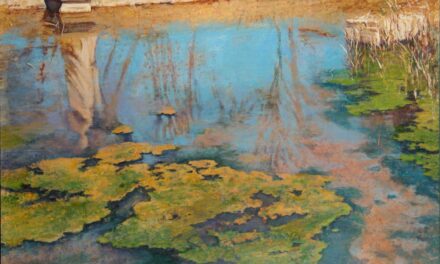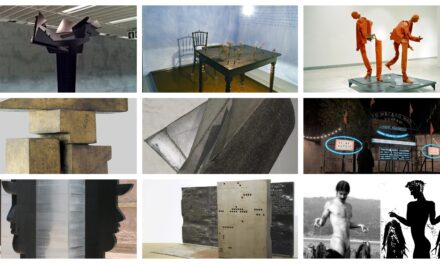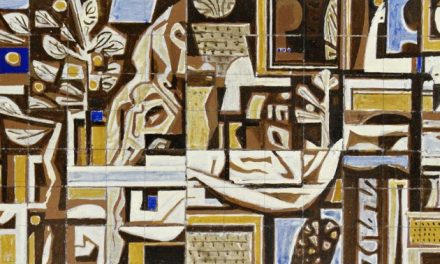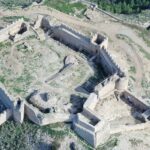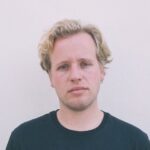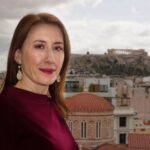Visual artist Konstantinos Patsios presents his new solo exhibition, ‘My father had a Big Nose, Objects and Toys from an Aggressive Childhood’ at Blender Gallery. Meticulously curated by Christina Ntougeropoulou, the exhibition brings together a palimpsest of techniques, symbols, and images that invite us to reevaluate the way we perceive ourselves and trace those elements that ultimately define us as human beings; childhood, family, society, subconscious, dreams, desires, and emotions.
Defined by autobiographical elements as well as a ubiquitous sarcastic mood, Patsios’ art, comprises sculptures, collages, videos, NFTs and ready-mades while reviving Pinocchio as his central motif to lead us through the labyrinths of the human condition.
Konstantinos Patsios was born in Athens in 1977. He studied Economics at the University of Piraeus and at the Grande École de Commerce de Poitiers in France. He received a scholarship to the Rhode Island School of Design (RISD) Providence, U.S.A. He then studied Painting at the Athens School of Fine Arts under Psychopaidis and Spiliopoulos, and Sculpture under Tranos. He has held seventeen individual exhibitions in Greece and abroad and has participated in numerous group exhibitions.
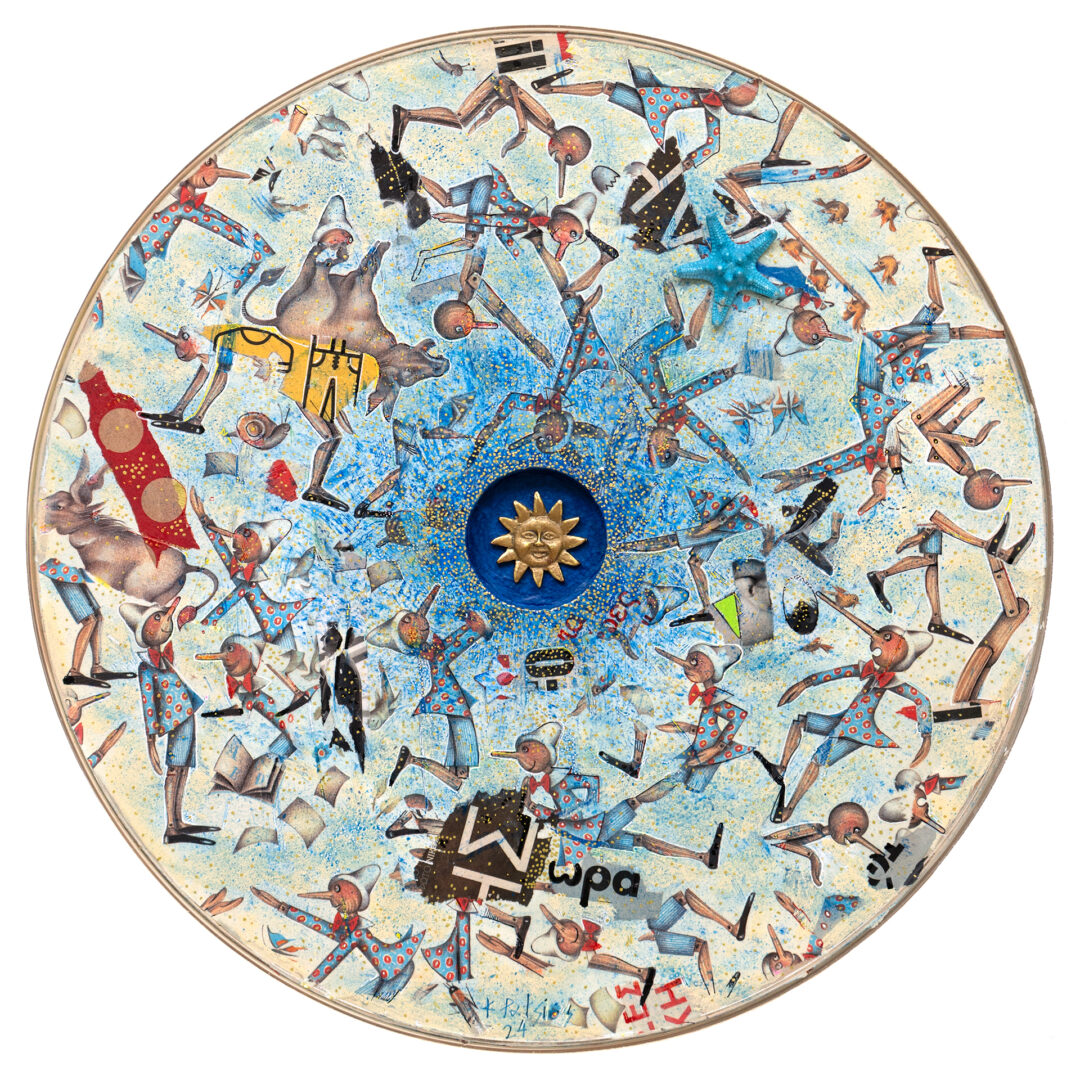
Konstantinos Patsios spoke to Greek News Agenda* about his deeply psychoanalytic artistic narratives, his obsessions and autobiographical references.
Your exhibition bears the incredibly imaginative title “My father had a big nose”. What is the underlying symbolism?
The title alludes to the stories my works of art narrate. It refers to the relationship between father and son, emphatically highlighting Collodi’s finding of a big nose. Pinocchio’s nose grows because of his anxiety to adapt to his new reality. The exhibition narrates the transition from the ideal world of the child, who believes his thinking is magical, to that of the adult, and depicts the conflict between dream and reality. The main issue it deals with is the difficulty of coming of age, either for an individual or the whole society. The title is complemented by an autobiographical reference to the objects and toys of an aggressive childhood, just like mine.
Pinocchio is ubiquitous in your art. What lies behind the choice of this controversial hero?
Pinocchio expresses the depths of human temperament. He begins his journey as a rough piece of wood. To grow up, all his roughness must be blunted, literally and figuratively. To reach the truth of his existence, he must transform himself by listening to his conscience and resisting temptations. In my work, Pinocchio shifts into a new context and converses with the figures of my iconography.
He meets Napoleon in a baroque aesthetic mansion, reads the newspaper when the sirens of war are sounding, and dances the blues in the maypole of capitalism but with a communist march. I appropriate the figure of Pinocchio to narrate my own adventurous reality.
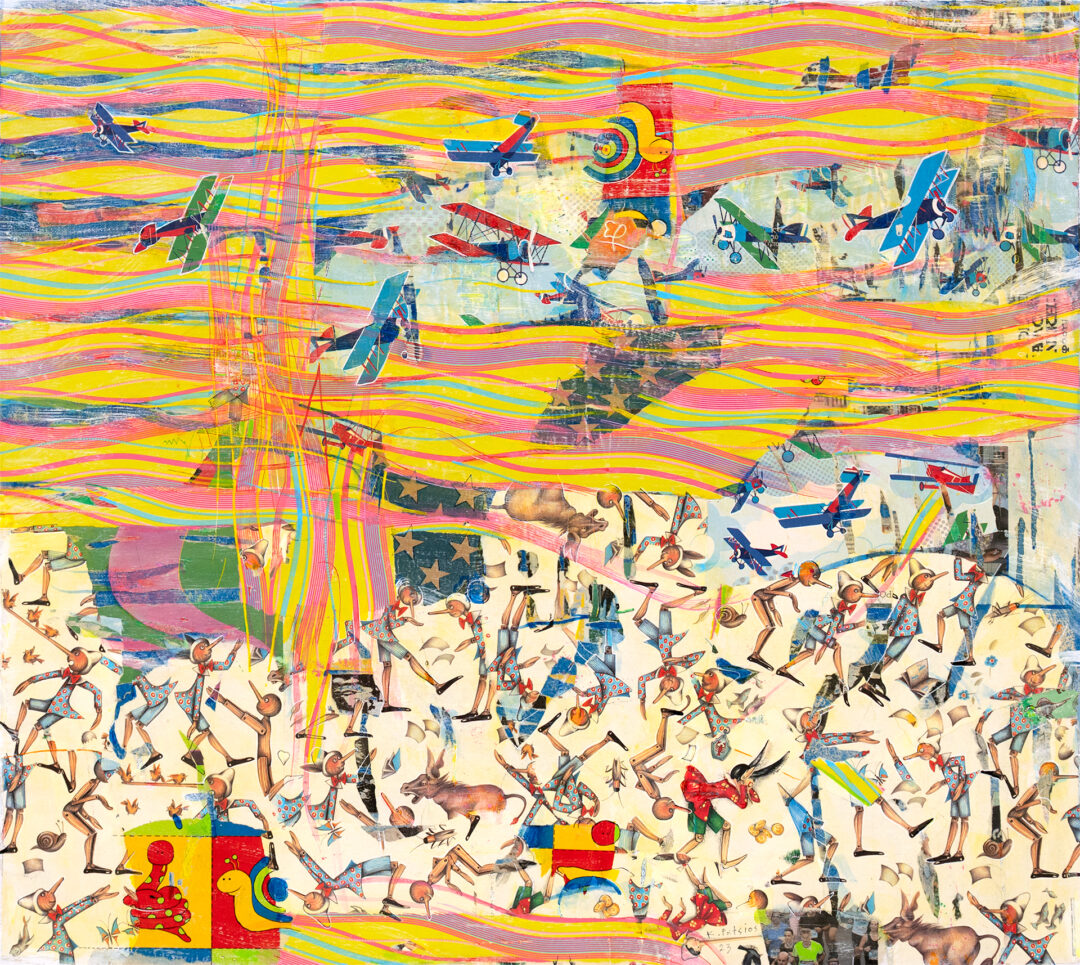
What is the purpose of using such a wide range of media?
The multiplicity of media I use is the product of a thorough attempt to penetrate my subject matter, just like a modern Pinocchio. For years, I have had my preferences in the way I express myself and the materials I use. In this exhibition, I enrich my presentation with NFTs and a short film, a documentary about my practice as a visual artist.
The exhibition also includes medium and large-scale sculptures, in direct dialogue with the paintings and their theme. A variety of materials, from marble and wood to ceramics, combined with ready-made objects such as pencils and chopsticks. All of these create an environment that tells stories of coming of age, reproducing the mechanisms of the dream, and creating a new, more inclusive hyper-reality. In any case, after Marcel Duchamp, contemporary art has an a priori inclination to fetishism!
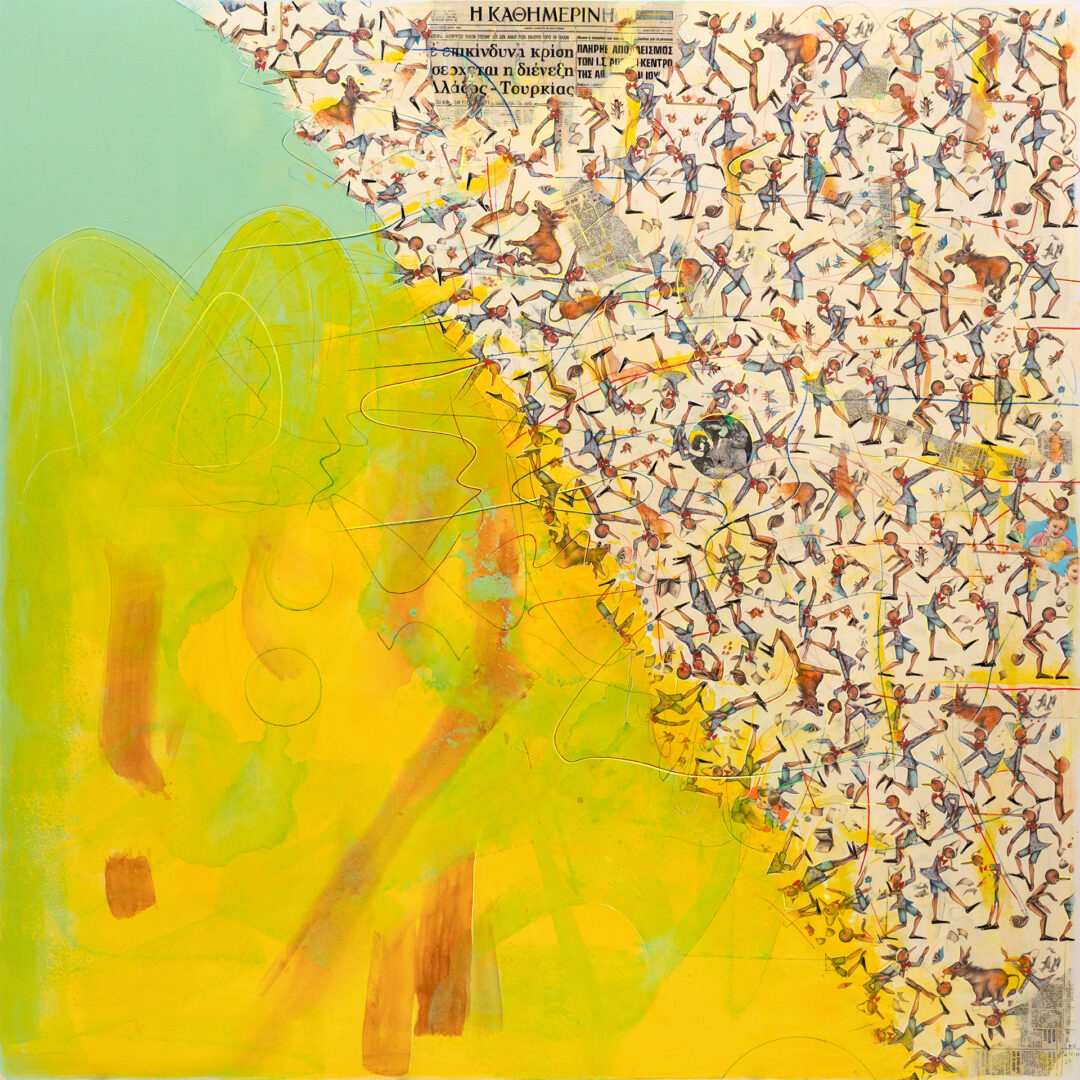
Almost every artistic movement and historical period is reflected in your art. How did this exuberance come about?
This exuberance is a result of my character. In a rationalistic and monetaristic world, art is a redemptive process. My work is largely autobiographical and includes objects from my daily life, my travels, my childhood. All this materiality and alchemy of the humble and non-material is an attempt to express the psychic richness of the contemporary human being through a fragmented image, through a very personal narrative, which paradoxically becomes very collective. I create a palimpsest that includes many different artistic idioms and a wealth of materials and visual tools.
Irony, humor, and sarcasm play a huge role in your works. What are the issues you are concerned with? Are there autobiographical elements in your art?
Irony and humor are two very helpful tools to deal with the ills of our lives. Art has a priori a psychoanalytic dimension, in visual terms, and in my work the influence of the unconscious component, the surrealist element and Dada is obvious. These works refer to the sketching of social correlations like the grotesque compositions of Hieronymus Bosch.
All these little Pinocchios seem to experience the passions, pleasures, and pains of modern man. I create a hybrid world, with various references to the past and the present, through a bounded attempt at psychic automatism. I conceive of visual creation as a slip of the tongue, as the invasion of the unconscious into speech, revealing all the uncomfortable, unspoken truths.
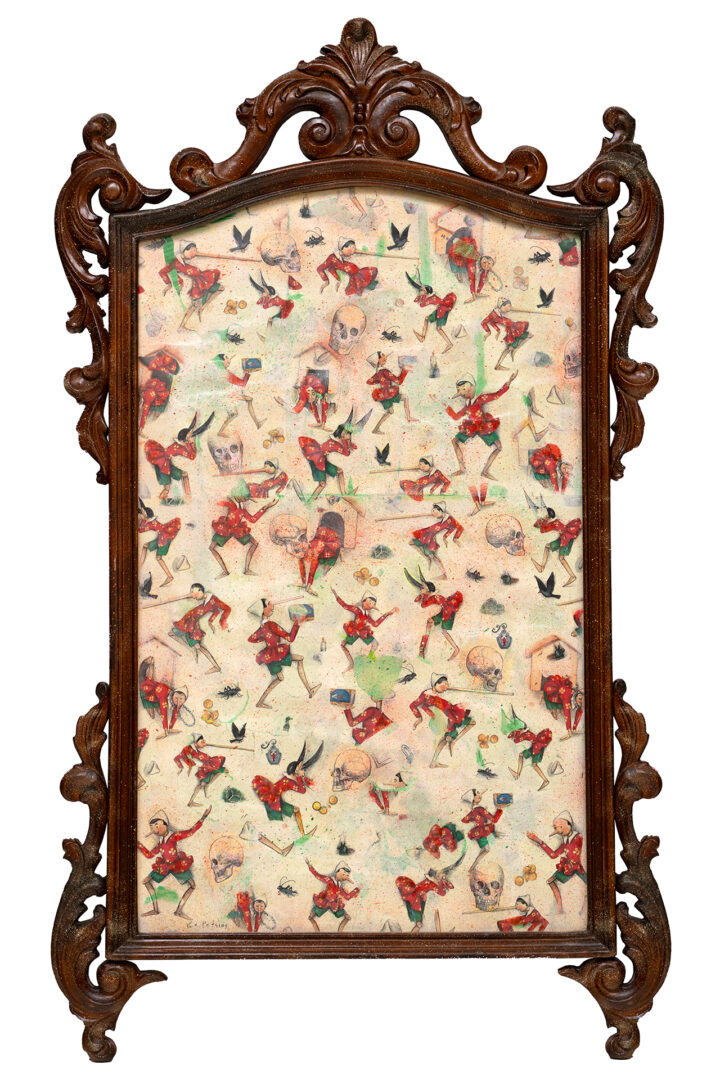
How does Greek contemporary art interact with the European or American art?
I think that Greece, after the Documenta 14 exhibition, has established itself in the European scene in terms of cultural products. It does not lack major events in terms of state and institutions. Unfortunately, the smaller art institutions, such as galleries and artists themselves, find it difficult to create a dialogue at a European level and to export artistic products with ease. We remain a peripheral country, between East and West, where great art is sometimes confined to a mere gallery event.
* Interview by Dora Trogadi
TAGS: ARTS

